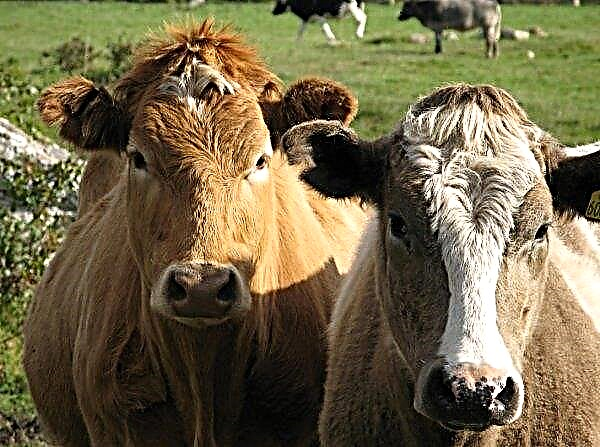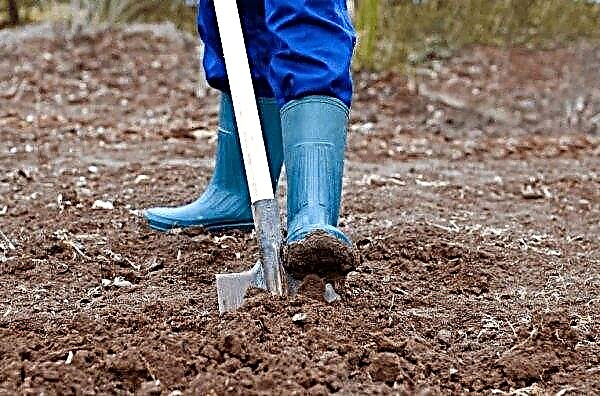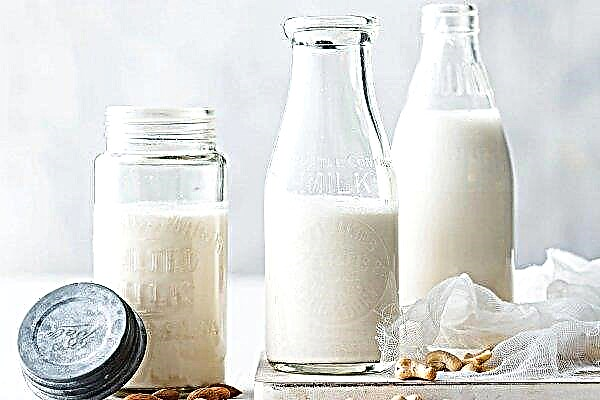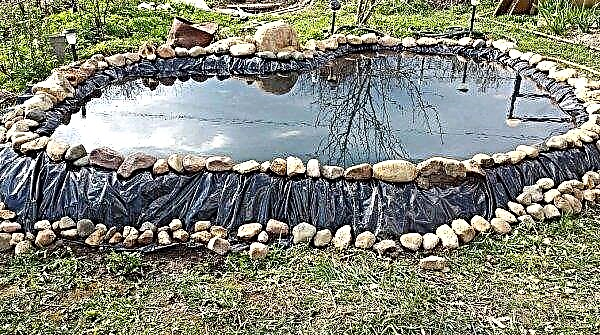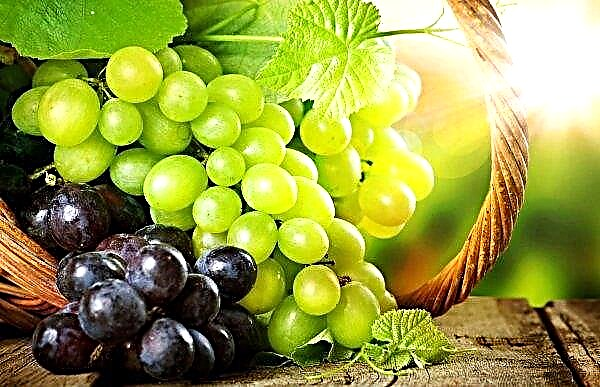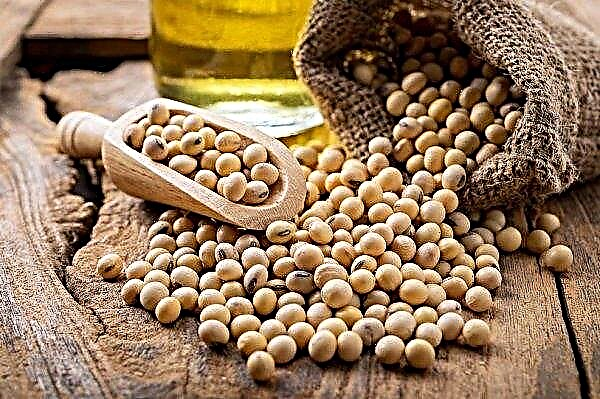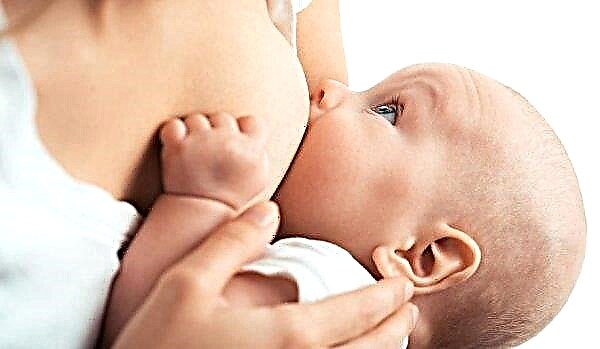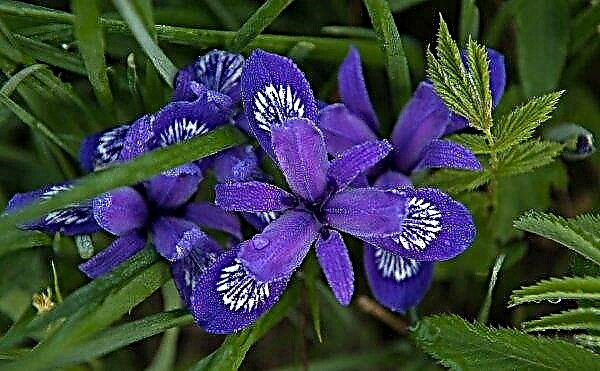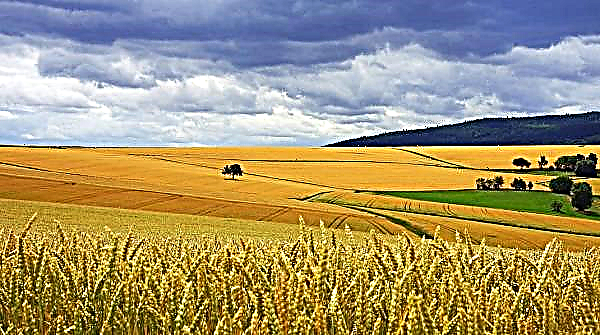Hydrangea large leaf Hot Red is one of the brightest varieties of this flower. The rich red color makes it a wonderful decoration for any garden. According to the reviews of experienced gardeners, this hydrangea is unpretentious in care, and even a beginner can take up its reproduction.
Description and characteristics of the variety Hot Red
Short description of the Hot Red variety:
- the size - height from 0.8 to 1.2 m;
- family - hydrangeas;
- leaves - large, egg-shaped, pointed at the edges, dark green in color;
- stem - compact, direct;
- flower - collected in a shield, with a diameter of 15–18 cm, the inflorescences have the shape of a ball, are collected at the end of the stem, a bright red hue;
- shoots - grow vertically, can bend arcuately;
- lifetime - from 30 to 40 years;
- growth rate - up to 20 cm;
- bloom - from mid-June to early September;
- the soil - moistened, acidic, drained, does not tolerate calcareous and alkaline soil;
- winter hardiness - high;
- insolation - partial shade.
How to plant
In order for planting material to take root, you need to know how long a seedling is formed or how to choose it correctly when buying.
It is also necessary to observe the rules regarding:
- landing dates;
- soil preparation;
- seat selection;
- the sequence of the landing itself.
When buying a seedling in a store, you should carefully study the root system of Hydrangea. The roots of the flower must have flexibility and elasticity. They should not be damaged, mold or rot. It is also necessary to examine the buds of the plant - they must not be dried.
Did you know? Hydrangeas have the ability to draw aluminum particles from the soil. In acidic soil, they are so saturated with this element that their flowers turn blue.
Landing time
In the middle and northern parts of Russia it is better to plant hydrangea in the spring, since before the onset of cold weather the flower should take root and grow stronger. In autumn, this plant can be planted only in the southern regions or if the next year promises to be not cold.
With self-propagation of the flower, it should be remembered that in the area where Red Hot will grow constantly, it can be transplant only a few years after grafting or abduction.

Site selection and preparation
When choosing a permanent residence for Red Hot, you need to remember that her inflorescences, if exposed to direct sunlight, can get burns and darken. And leaves and stems need light for growth and photosynthesis. For these reasons, the selected area should be in partial shade. Hydrangea does not like drafts and gusty windtherefore it is better to plant it in a place protected from harsh air masses.
Important! Hydrangea needs a lot of space to grow normally. The distance between it and other trees, bushes should be about 2.5 m, and the gap between the hydrangea bushes — from 1.3 to 1.5 m.
If there is a lot of bogging, the bush should be drained, although the plant loves moisture, but its excessive influence can lead to decay of the root system.

Soil preparation
In order for the Hot Red variety to retain the bright red color of the petals, it must be planted in the soil with an average pH. With strong acidity, the flower stalks will begin to turn blue, and with low acidity they will turn pale.
If the soil is alkaline, then hydrangea can get chlorosisand her flowers will turn yellow. Also, sandy soils are contraindicated for this plant.
The plant mixture, which is used to put recesses for the flower on the bottom and cover it, should be prepared from peat, humus and fertile soil in a ratio of 1: 1: 2. Instead of such a plant mixture, you can use the soil, which is located next to pine trees. The land there is always light and acidified, but the main thing is to control the amount of sand in such soil.

Landing instruction
Planting a plant can be divided into a number of simple steps:
- Dig a hole 50 cm deep and 60–70 cm wide.
- If necessary, lay drainage up to 10 cm.
- At the bottom of the recess, pour 5 cm of the plant mixture.
- Set the seedling in the center of the recess.
- Level the roots and cover them with the rest of the mixture.
- Pour the bush with one bucket of water and mulch the fallen leaves with a layer of up to 10 cm.

Hot Hydrangea Care
When caring for Hot Red, one should not forget about such simple things as watering, fertilizing, pruning, preparing for the winter period.
In addition, the area around Hydrangea must be freed from weeds, as its roots are close to the earth's surface, and weed grass does not allow them to feed. Also, loosening should be carried out once a month, but do not do it deeply, up to a maximum of 5 cm.
Video: Winter hydrangea care and shelter
Watering
Red Hot, like all hydrangeas, loves moisture, but its overabundance is harmful to the bush. If the season is not rainy and not dry, then 1-2 buckets of water in 14 days will be enough for the plant to grow normally. If drought occurs, the amount of watering should be increased to 1 time per week, but if, on the contrary, the doge season has begun, then you can water Hydrangea once a month.
 The bush is poured with warm water, into which several grams of manganese can be added to prevent decay of parts of the root system of the plant
The bush is poured with warm water, into which several grams of manganese can be added to prevent decay of parts of the root system of the plant
Top dressing
You need to fertilize Hot Red 4 times per season:
- In late May or early June complex fertilizers are applied (30–40 g per 1 liter of water), a small amount of organic dressing can also be added.
- Two weeks before flowering the plant is fertilized with potassium sulfate and superphosphate in a ratio of 1: 2.
- After the dissolution of the buds it is necessary to repeat potash top dressing.
- In mid-September, hydrangea is fertilized with bone meal.
Important! You can not add wood ash to the fertilizer: it leads to pallor of the petals, and fertilizing with nitrogen can only be used in the spring, since they reduce cold resistance.
Pruning
Plant pruning should be carried out in the spring, before the movement of juices along the branches. Sanitary pruning is the removal of damaged, weak or dead branches in the winter.
Cosmetic pruning is divided into 2 stages:
- In the first few years after planting, it is necessary to remove small inflorescences when they are just beginning to form. This will increase the growth and splendor of the rest of the bush.
- In an adult Hot Red plant, old branches that are more than 3-4 years old and those that grow inside the plant are trimmed. This will increase the number of inflorescences.

Winter preparations
Despite the fact that the flower is winter-hardy, it should still be covered. Young seedlings, 1-2 years old, must be mulched with dry soil, peat and needles, then covered with a dense material, such as roofing material. If the bush is not large, then it can be covered on top with a wooden container.
Adults Hydrangea are first tied with ropes in the upper part of the plant, then they are covered with dense material (burlap and film), the edges of which are covered with dry soil and leaves.
Diseases and pests: control methods and prevention
Hot Red has a fairly high immunity, but still this large-leaved plant is susceptible to a number of diseases:
- Chlorosis. It affects hydrangea with a lack of iron in the soil. It leads to darkening of peduncles and shoots, deforms buds, twists leaves. It is treated with substances containing iron in chelated form (Ferovit, Antichlorosis).
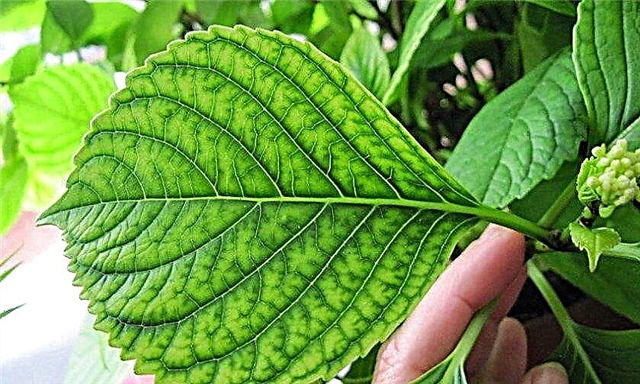
- White rot. The fungus that infects the root of the plant. It leads to decay and death of the flower. Symptoms of this disease are blackened shoots and faded spots on them. It is treated with fungicides - “Fundazol”, copper chloride, “Fitosporin”.
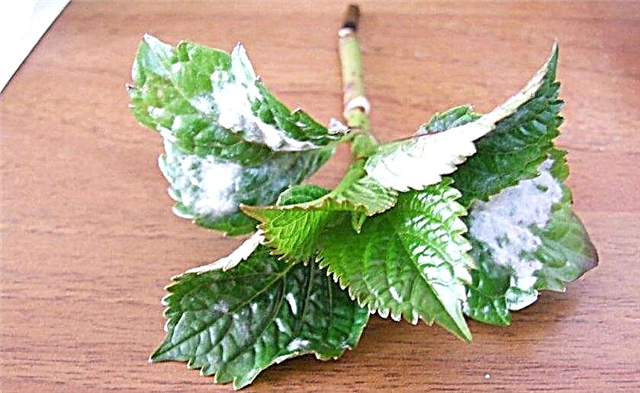
- Septoria. It appears in the dark-brick color spots on the foliage. Leads to their death. In advanced cases, it affects shoots and leads to the death of hydrangea. From septoria, drugs help. containing copper (e.g. copper oxychloride).
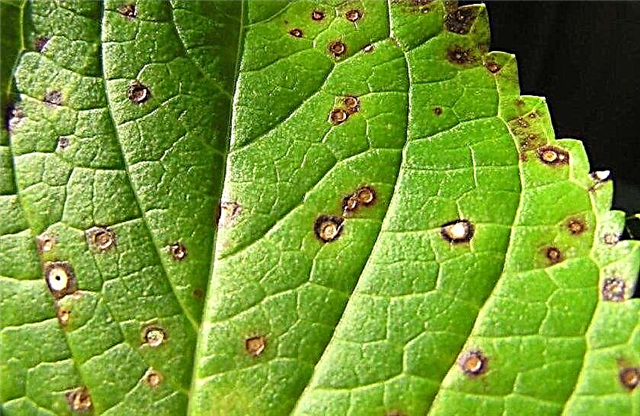
- Powdery mildew. The yellow spots on the foliage darken to a brown tint. Then the young shoot is affected, which is deformed and dies. It is treated with fungicides - Fitosporin, Alirin, Topaz or Chistotsvet.

- Rust. Hydrangea leaves and shoots are covered with a red coating. Appears due to the large amount of nitrogen in the soil. It is treated with copper chloride or fungicides.
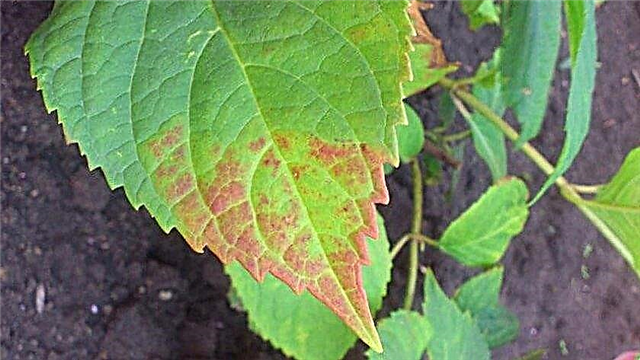
- Ring spotting. Viral disease, which can be determined by small faded rings on the leaves, leads to the impossibility of the formation of buds and subsequent death of the plant. It does not give in to treatment. So that this disease does not occur, you should carefully study the planting material.
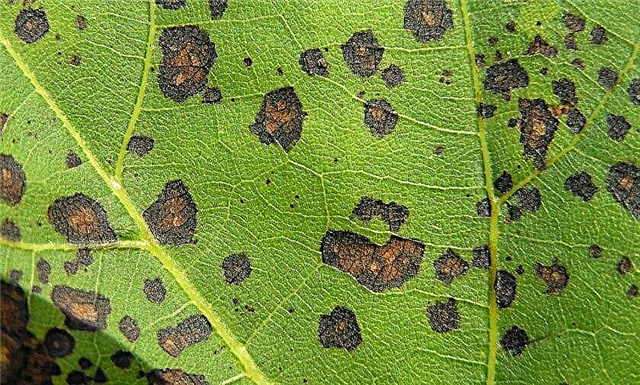
Insects harmful to Hydrangea:
- Leaf aphid. It sucks out useful substances from the flower, secretes fluids that lead to fungal diseases. Insecticides help her - Fitoverm, Zubr, Iskra or Aktara.
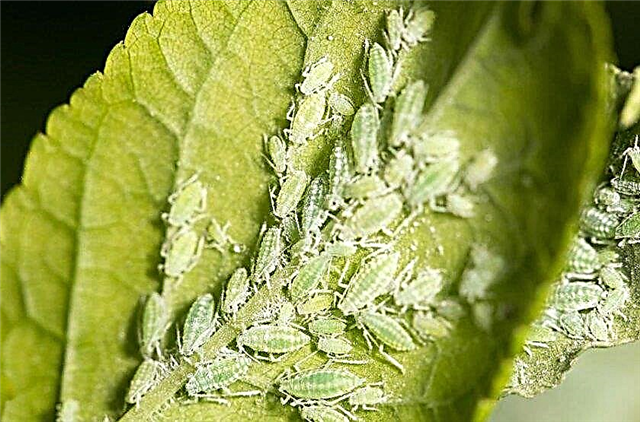
- Spider mite. Tangles leaves with cobwebs, which leads to their drying. You can remove this parasite with a soap solution or insecticides - "Lightning", "Thiophos", "Akarin."
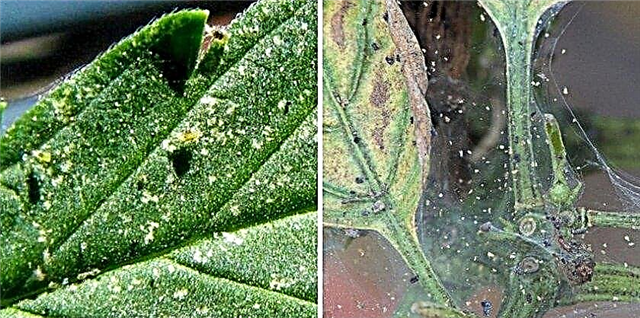
- Slug. Feeding on the foliage of a flower. Against them, the drug "Molluscocide" helps.

The best prevention of the emergence of diseases and harmful insects is the proper care of hydrangea. Also, preventive treatment of the plant in the spring by Iskra, Topaz or Fitosporin helps against pests.
Breeding
There are three ways to reproduce hydrangeas:
- by seeds;
- cuttings;
- layering.
Perhaps the most painstaking way is to grow a plant using seeds, but in order to use the other two options, you must have some experience.
Seeds
In winter, fresh Hot Red seeds are sown in planting tanks. Soil should be chosen light, it is necessary to add peat, turf, humus and a little sand. The seed is sprayed with water and covered with a film for the greenhouse. They should be aired several times a week so that the seeds do not rot. When several leaves appear on the crop, it is transferred to separate containers with peat. In open ground, material is planted after the frost has left.

Cuttings
For cuttings, choose root shoots before the lumbering process begins.. You need to trim them in late spring or early summer. The size of such a handle should be from 12 to 15 cm. All leaves are cut from it, except for a few in the upper part.
Did you know? In order for the Hot Red flowers not to fade immediately after cutting, they must first be dipped in cool water, and then in hot. This will extend the life of hydrangea in a vase for several weeks.
Shoots are planted in a tank with a soil mixture in which peat should prevail. The incisions should be treated with a growth stimulator, and pour the mixture before planting. When the cuttings take root, they should be fed with mineral fertilizers and ammonium nitrate.
In spring, boxes with seedlings should be taken out for 1-2 hours in the open air for acclimatization. In the open soil, seedlings can be planted in a year.

Layering
To form a lay, you need to select the lower branch of Hydrangea and bend to the earth's surface. At the place where the branch is in contact with the ground, it is necessary to draw a shallow incision, which is immediately treated with a growth stimulator. Then the sprout is sprinkled with earth and squeezed. The soil around this place should be constantly moistened until the cuttings take root. For winter it should be mulched with dry leaves and wood chips. You can only separate a new seedling next spring. In this case, it should immediately be transplanted to a new place.
Due to its decorative properties, large-leaf hydrangea Hot Red is considered one of the most popular representatives of its kind. Its frost-resistant qualities allow you to grow this plant almost throughout Russia.










